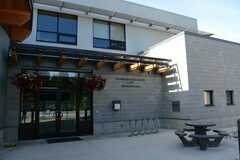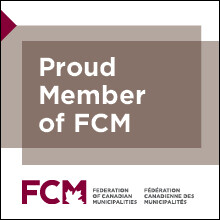Resolutions provide local governments the opportunity to express their concerns, share their experiences and take a united position.
EB36 Greater Enforcement for Provincial Invasive Mussel Defence Program
Whereas the invasion of zebra and quagga mussels poses a serious threat to watercourses in British Columbia and the primary vector for invasive mussels is watercraft entering the province;
And whereas the provincial Invasive Mussel Defence Program (IMDP) is the first line of defence and remains grossly underfunded with less than 10 watercraft inspection stations throughout the province;
And whereas the Province has yet to introduce ‘pull-the-plug’ legislation, legislation that requires watercraft owners to clean, drain and dry their vessels or mandatory watercraft inspections for vessels entering British Columbia:
Therefore be it resolved that UBCM ask that the Province increase funding for the IMDP, introduce legislation that requires watercraft owners to clean, drain and dry their vessels when entering BC and establish mandatory watercraft inspections to ensure the protection of our watercourses.
Provincial Response
Ministry of Water, Land and Resource Stewardship
Keeping B.C. waters free of invasive mussels is an ongoing priority for our government. Both the Ministry of Water, Land and Resource Stewardship (WLRS) and the Ministry of Environment and Climate Change Strategy (the Conservation Officer Service (COS) in particular) remain committed to the shared delivery of the Invasive Mussel Defence Program (IMDP) and its watercraft inspections, enforcement actions, lake monitoring, and education.
The Province will continue to monitor changes in information, knowledge, and threats, as well as collaborate with neighboring jurisdictions in Canada and the United States (U.S.) to ensure our prevention measures are commensurate to the risks posed by invasive mussels.
Regulatory tools to enforce ‘Clean, Drain, Dry’ such as Pull the Plug legislation has been identified for consideration in the current Wildlife Act review. We encourage recommendations to be submitted through the Wildlife Act review process (WildlifeActReview@gov.bc.ca).
IMDP funding relies on funding partners and fluctuates annually. In direct response, the Government of B.C. has either maintained or increased support in recent years, to maintain fundamental program operations. In 2023, financial support has come from B.C. Hydro, the Columbia Basin Trust, Columbia Power, and three B.C. ministries. Having your support in seeking funding increases is critical to our Ministries’ ability to work with funding partners to keep the IMDP a collective priority.
It is mandatory for anyone transporting a boat in B.C. to stop at an open inspection station along their travel route during the boating season, from April to October. Watercraft and related equipment include sailboats, motorboats, car toppers, kayaks, canoes, and paddle boards being transported.
NR41 Riparian Areas Protection Regulation Compliance
Whereas the Riparian Areas Protection Regulation regulates development within a riparian assessment area and a local government cannot approve a development application until an assessment report from a qualified environmental professional (QEP) has been submitted through the Riparian Areas Regulation Notification and approved by the Ministry of Water, Land and Resource Stewardship;
And whereas the Ministry response time to review QEP reports continues to increase, unreasonably delaying local government development and significantly impacting local economies;
And whereas the effectiveness of the Riparian Areas Protection Regulation relies on local government compliance which is compromised by the Ministry’s lack of resources and inability to respond in a timely manner:
Therefore be it resolved that UBCM ask the Province to grant local governments the authority to accept and review QEP reports for developments within its own jurisdiction.
Provincial Response
Ministry of Water, Land and Resource Stewardship and Ministry of Forests
The Ministry has significantly improved the Riparian Area Protection Regulation (RAPR) program in the past year. We have cut ministry review response times from 8 months to 15-30 days. It is expected that these improvements will address many of your concerns.
Alternatively, local governments can use the 'Meet or Beat' approach outlined in RAPR Section 12(4)(b), bypassing provincial review if their bylaws meet or exceed standards. RAPR staff are available to support local governments who want to implement this approach. Please reach out to riparianareas@victoria1.gov.bc.ca for support.
EB65 Trans-Canada Highway Improvements
Whereas the Trans-Canada Highway is BC’s primary southern east-west corridor and is essential for trade and travel;
And whereas the 400-kilometre section of highway between Kamloops and the Alberta border is home of the most challenging terrain in Canada and is used by up to 12,000 vehicles a day;
And whereas in 2021 the Province committed to $837 million over the next three years to allow traffic to move more safely and efficiently within the corridor, however, several projects identified in the Provincial plan are not yet underway, including the deteriorating RW Bruhn Bridge that poses significant public safety concerns:
Therefore be it resolved that UBCM request that the Province initiate projects currently identified in the 2021 “Highway 1 - Kamloops to Alberta – Four-Laning” plan to improve the safety, reliability and capacity of the Trans-Canada Highway
Provincial Response
Ministry of Transportation and Infrastructure
Improving the safety, reliability and capacity of Highway 1 to the Alberta border is a priority for this government. This commitment was supported by Budget 2021, with $837 million being invested over the next three years on the Highway 1 four-laning program.
Construction is complete on the Illecillewaet Project near Revelstoke, the western segment of the Chase four-laning project near Chase and the western segment of the Salmon Arm West four-laning near Salmon Arm. Construction has begun on the Ford to Tappen project near Tappen.
Construction continues on the eastern segment of the Chase four-laning Project, the Quartz Creek Bridge Project, and the Kicking Horse Canyon Phase 4 project just recently reached substantial completion and opened to 4 lanes.
The province recently approved the Selkirk four-laning and the Jumping Creek to MacDonald project is now moving into the Request for Proposals phase of the contract.
The Bruhn Bridge project is a design bid-build project with a 2-phase procurement process. The project is currently in phase 1, Request for Qualifications, to pre-qualify constructors who will then be eligible to participate in phase 2, the project tender. The RFQ phase will complete in early 2024 with tender to follow.
Endorsed by the Southern Interior Local Government Association.
- 2023 SILGA Resolutions Book
- 2023 UBCM Resolutions Book
- 2023 UBCM Resolutions Disposition
- 2023 Provincial Responses

